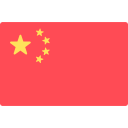CSR-10
STELLANTIS Supplier Product Development Standards (Licensed STELLANTIS)
A licensed training module that is aimed at supplier project team in charge of Project Management and Product Development on projects with STELLANTIS. Starting with analysis of Technical Specifications, the module explains all steps of product development with STELLANTIS up to the Serial Part Inspection Standard. Practical Case Studies all over the session exemplify to training participants all presented standards.
Your needs are:
- Develop a robust product solution that respects all customer specifications
- Understand all customer specific standards that concern product development
- Perform a robust product feasibility study and define variable and stable product characteristics
- Use b2b portal to find all technical specifications, use PLM, DocInfo and other important applications
- Prepare a lean product inspection solution for serial team
- Prepare and update the Supplier Conformity Dashboard
- Understand the logic of project A3 file
- Practice all acquired knowledge on Case Studies
Target group:
- Project Managers
- R&D Engineers
- Process Specialists
- Project Quality
- RFQ team
- Serial Quality
Training content:
- Part 1 – Training introduction
- Stellantis objectives in terms of vehicle quality and final user satisfaction, objectives and benefits of the training module
- Part 2 – STELLANTIS vehicle development milestones (PDP)
- Vehicle development process by STELLANTIS (PDP), explanation of all vehicle milestones, focus on the vehicle build milestones for the purpose of the training program
- Part 3 – Supplier part development phases & milestones (APQP), project A3/Supplier Conformity Dashboard
- Supplier component development process by STELLANTIS (APQP), explanation of purchased parts phases & milestones for the purpose of the training program, A3/Supplier Conformity Dashboard
- Part 4 –Expression of need by STELLANTIS and supplier answer
- Technical Specifications (ST) analysis, technical norms applicable on the project, Public Standards/DocInfo Community # 01446, Supplier answer to the TS, Requirements Coverage Matrix, justification of ST respect, action plan definition/follow up, STELLANTIS AQRs (Additional Quality Requirements), Case Study
- Part 5 – Potential and known failure mode management
- Risk analysis & Risk Mitigation Plan creation, Feared Events classification, STELLANTIS requirements on DMFEA/PFMEA, Supplier Safety Report, Case Study
- Part 6 – Technical & Functional Characteristics (CTF List)
- CTF meaning, the first CTF List analysis, dispute of CTFs, CTF compliance priority, analysis of the CTF feasibility and definition of stable/dispersive CTFs, the final CTF List, Case Study
- Part 7 – Design Verification Plan & Report (DVP&R), IMDS, Product Audit requirements
- Correlation between the ST/Requirements Coverage Matrix, CTF List and DVP &R, requirements on testing, deadlines for DV/PV tests execution, DVP&R planning over an APQP project and execution of all tests, IMDS requirements, product audit requirements, Case Study
- Part 8 – Part Inspection Standard (PIS, former PCP)
- real meaning & application of PIS, explanation of the whole document PIS (all columns explained), adding CS/CSE controls to the PIS, visualization of control points, referential system, frequency of controls, MSA requirements, commitment on CS/CSE conformity/capability in line with CTF compliance priority, project/serial PIS, correlation PIS – Control Plan, Case Study
- Part 9 – Dimensional Report (RCM)
- explanation of both – former RCM (part of the CTF/PCP file) and the new one (a separated document), RCM phases, import of measured values, product conformity evaluation, process capability evaluation (former version)/process capability synthesis (new version), objectives on SPC, Dimensional report cover page, sharing of the Dimensional report in DocInfo, Case Study
- Part 10 – Product change management in the project/serial phase
- part history, parts stickering rules, ECR management – FETE sheet, FIPA Amendment (both technical and economical impact management explained)
- Part 11 – Final exam (N/A for on-line sessions)
Duration: 2 days












